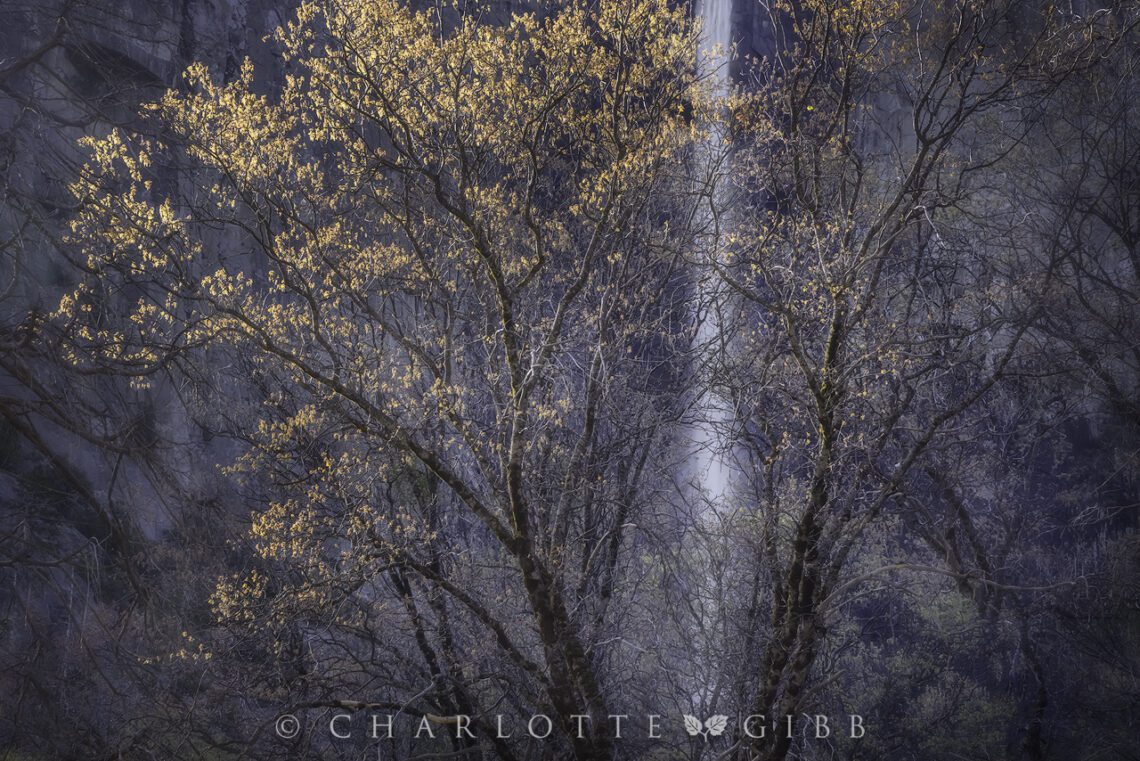
Slow Photography and Working a Scene
Landscape photographers often have an approach to working a landscape scene. My own style is a bit like a slow dance, not about rushing around, although at times changing light demands quick action. It’s about observing, being in a flexible state of mind, and slowing down. I recently wrote an article on the slow photography approach for the Out of Chicago blog, which is about the resurgence of the Slow Photography Movement. Now, I want to take you through a morning with me when things didn’t go quite as expected.
Taking a visual inventory
I spent a few precious days in Yosemite Valley last week. Spring is one of my favorite seasons in Yosemite and I was excited to see how things had changed since I was there a couple of weeks ago, when Winter still held its grip on the park. When I first arrived, I explored my favorite spots to observe what is going on in nature. What’s the light doing? Is there seasonal color? How high is the river? My camera didn’t even come out of the bag at all until I completed my rounds. Sadly, conditions are dry for this time of year, but the waterfalls were gushing nonetheless, and a few Dogwoods were starting to bloom. Skies were mostly clear, so I would plan to focus on creating more intimate compositions, which was fine by me!
A change of plans
The next day, Gary and I left our Wawona property pre-dawn and drove down to the Valley in our truck camper. My intention was to photograph the Dogwoods along the river, but because of construction along the Western end of Southside Road, we wouldn’t be able to stop in our usual spot. As such, we parked a bit further upstream, planning to work our way down the river on foot. As it would happen, we didn’t get very far before our way was blocked by high water. So, I looked around, saw some beautiful side light on a Black Oak that was just beginning to push out its Spring foliage, and started working the scene.

Working the scene
On any given day, when I am photographing the landscape, I often end up with several compositions of the same subject. Sometimes I immediately spot a composition that ends up being my favorite, but more often than not, it takes a while to zero in on what I am trying to say about the place. One of my techniques is to start out with a wider lens, then work up to one of my telephoto lenses. My Canon 24-105mm ƒ4L lens is perfect for this approach. On this morning, it was the only lens I used.
Look for patterns
I usually start by finding repeating lines or patterns in the landscape. In the case with the photograph below, I was initially drawn to the exceptional light on the Black Oak, but then I noticed the snag on the left. Its shape echoes the vertical line of the waterfall, creating a rhythmic feel, so I included it. I chose an asymmetrical balance approach, the lit up tree carrying the most visual weight. The pine branches along the top right edge bothered me, so I de-emphasized them by reducing contrast and saturation. I was somewhat happy with this comp, but there was more work to do before I was satisfied.
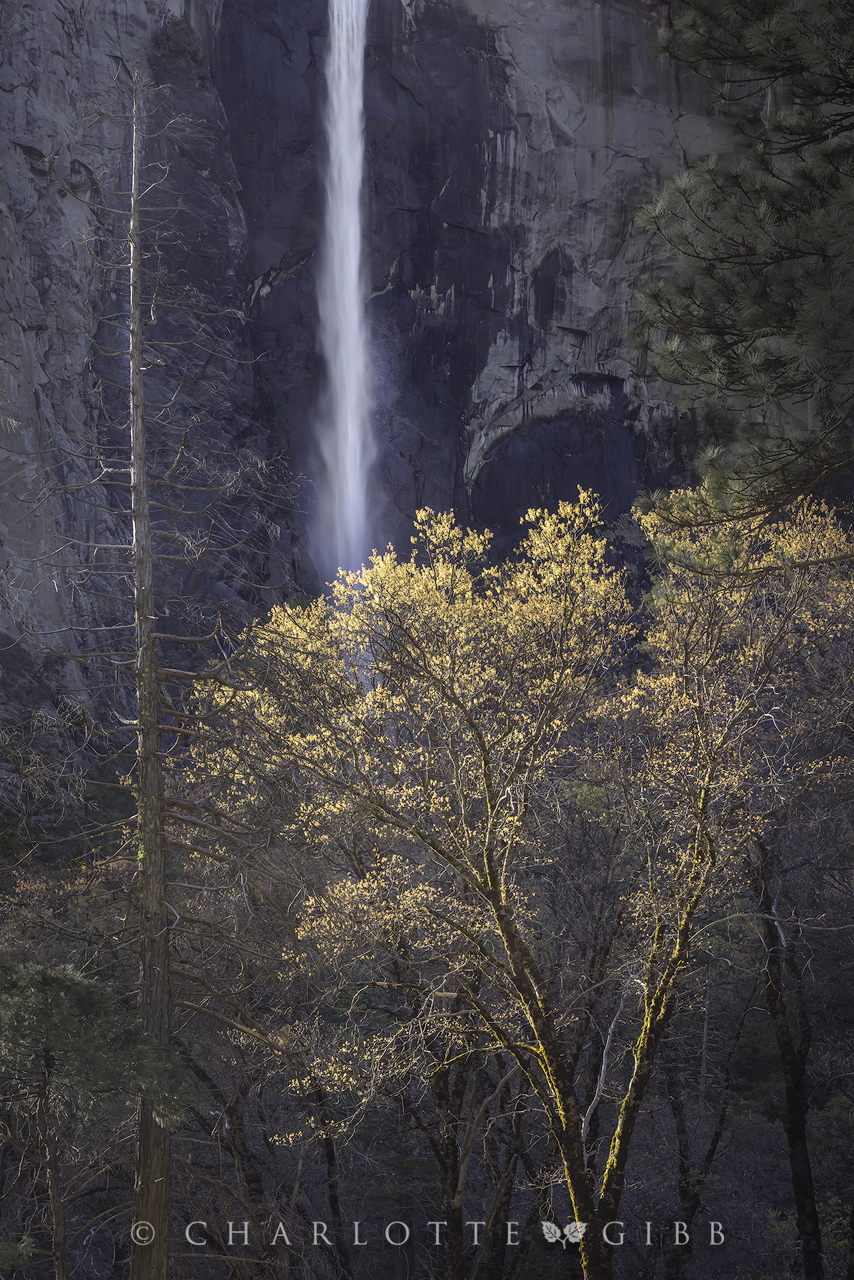
Simplify
In my next composition, I reduced the scene to its essential elements — light on the tree, and the waterfall taking up a secondary position in the background. The beautiful side-light along the branches and trunk were important to include, giving structure to the composition. I shoot in RAW mode with white balance set on AUTO, preferring to let the camera pick the best white balance. White balance can later be adjusted on the raw file in post-processing. As is often the case in Yosemite, the camera reads the shadows on the cliff face as blue. Normally, I might color-correct for the blue, but I chose to leave it pretty much as the camera saw it. I love the color contrast and interplay between the warm and cool colors, creating depth. Warm colors advance, while cool colors recede.

Adjusting with changing conditions
The light was changing quickly. In Yosemite Valley, the cliff walls act as keyholes as the sun appears through gaps in the peaks, then disappears. The beautiful side light on the trunk was gone, but the top branches were still lit up. As the light moved up the tree, I decided to just focus on the lit up tops, choosing a horizontal format. There were some Ponderosa Pine branches just outside the frame in the upper right, which I didn’t want in the frame. So, I chose to frame up this composition a bit lower, clipping the top of the lit tree.

Zeroing in
I finally settled on this composition before the light completely faded. The juxtaposition between the tree and the snag captivated me. The waterfall in the background becomes a tertiary element — less important than the relationship between the living and the dead. Within a few minutes, the sun had disappeared behind the cliff, and the scene was a quiet monochrome again.

Visit My Galleries
As always, my prints are available for sale at www.charlottegibb.com. My Limited Edition Prints are made personally by me in small editions of 30-100 pieces. I sign, title, and number each print personally. They are made using a using a specialized large format printer with the highest quality archival inks and papers available. With proper care and storage, these prints are rated to last 250 years, which is far longer than emulsion prints.
Ask Charlotte!
Have a burning question about photography? Go ahead! Ask me! I’ll do my best to answer your question about gear, processing, field work, printing, or just whatever is on your mind.
charlottegibb
Charlotte Gibb is a contemporary fine art photographer based in the San Francisco Bay Area specializing in landscapes of the Western United States. Her images are often taken in familiar places for the well-versed landscape photographer, but she prides herself on her keen eye toward the subtle and sometimes overlooked beauty of the natural world. Growing up among the beautiful mountains of Northern California, she considers herself a student of life, learning about people, nature, music, and photography along the way. But always, her life-long passion for the wilderness shines through it all. Charlotte earned her Bachelor of Arts degree from the Academy of Art University in San Francisco and has exhibited her work in several solo shows throughout California. Her darkroom, long gone now, has been replaced with digital darkroom tools, and her style has evolved from a somewhat journalistic approach, to one that pays tribute to the natural world.


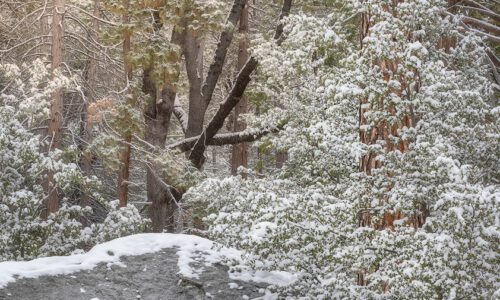
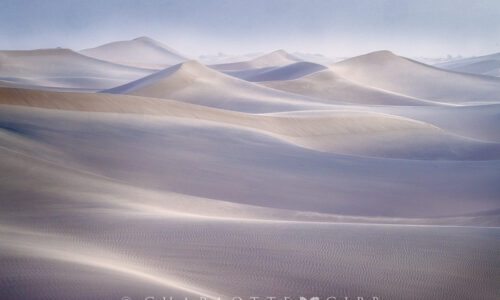
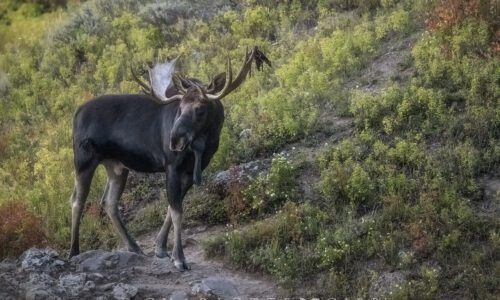
3 Comments
Mark Howenstein
Charlotte:
This is one of my favorite images of yours. So simple, radiant and symbolic–all in one! Great work. Thanks for sharing.
Yours,
Mark
charlottegibb
Thank you, Mark. I really appreciate your taking time to read my thoughts on my processes. And I’m glad you enjoy my work!
Greg P.
Charlotte:
Thank you for posting that article on how your thought processes work when trying to compose an image. They are all lovely, unique, and perceptive images. I particularly enjoy the first couple of images simply because of the amount of magical side lighting of the oak leaves, and especially the lighting defining the trunks, as the whole tree is an active participant as the primary subject matter, not just the leaves. In the latter photos your compositions are lovely, but that darned, finicky side light disappears on the trunks…drats! (My opinion only.)
Which brings me to a question for you, how long did this whole evolution take to come up with these photos? I love slow, comptemplative photography field sessions, but at least for me, and especially in a dynamic lighting location like Yosemite Valley, as I’m wrestling with composition, the lighting changes, so it seems one needs to slow down…but not too slow! I’ve often lost the light on a scene by too much 1) delighting in the natural scene before my eyes, and/or 2) wrestling with defining my composition.
A mention on the first image, this is a lovely composition, excellent lighting, but beyond that it is an image that the viewer, can fairly quickly recognize as from Yosemite. So it may have broader appeal to an audience that likes images that can be tied to Yosemite, but with a unique interpretation. I think it is difficult to come up with an image that has an identifiable Yosemite icon in it, yet it is still fresh, and unique…congrats!
No less lovely, the latter images are excellent composition, but for the general viewing public they might not be able to put it together that these were made in Yosemite, as they are more intimate (but would appeal to viewers where it is not necessary to have the image tied to a location).
They are all lovely, excellent imagery, would love to see more!
Regards,
Greg P.